I've just finished these two belts for a relation - who has now become my second 'collector'. An artist friend told me that when someone has bought three paintings, they become an official collector. This is the second person who has bought one of my belts and then wants two more in different colours.
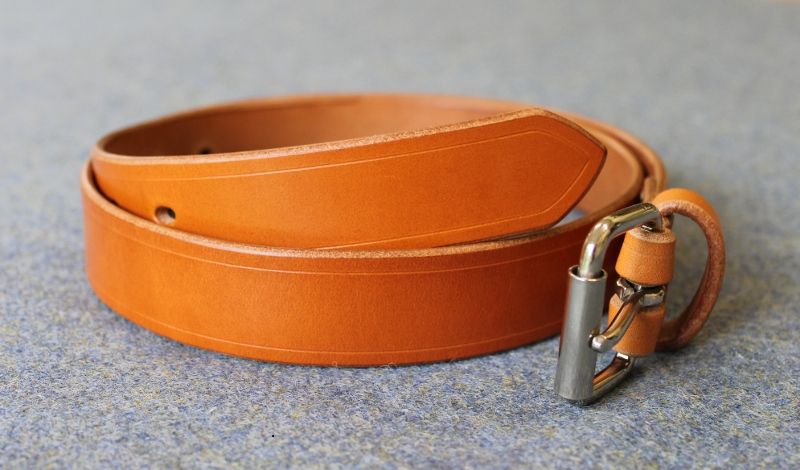
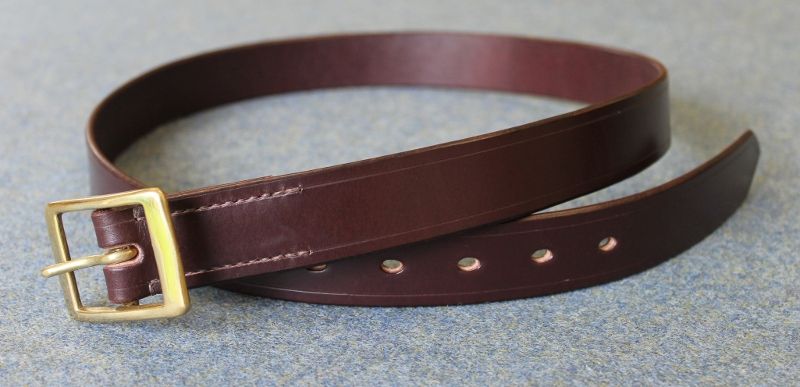
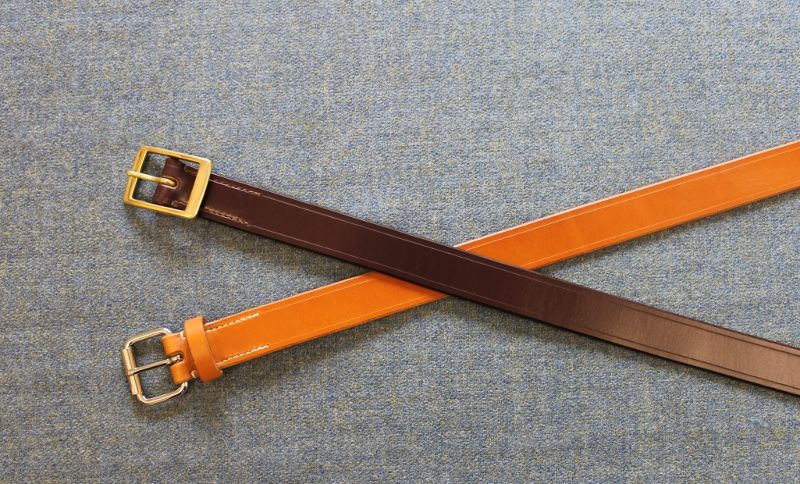
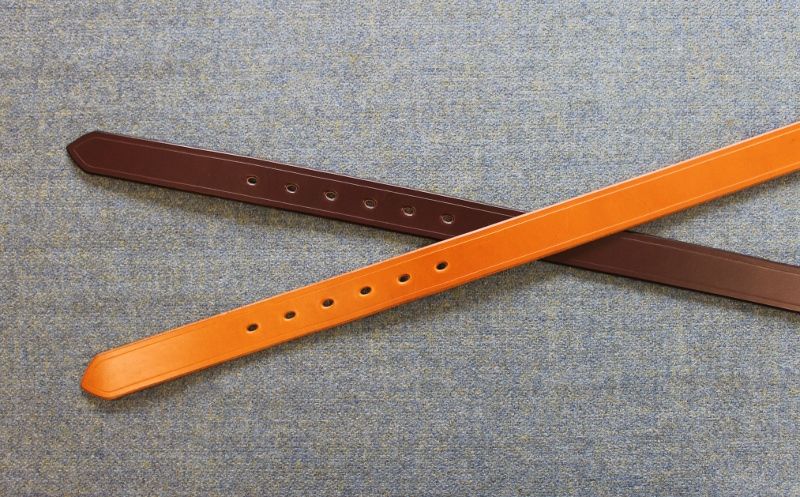
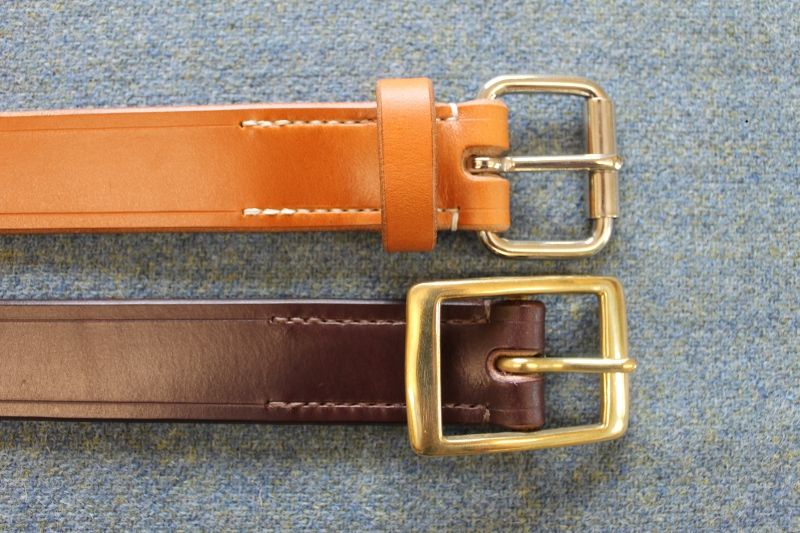
Belts like these take a lot of work to make. I'd written him this little piece on 'the generation of a bridle leather belt'.
I'm afraid that my photographic ability doesn't do justice the the leather - you have to see them in the flesh to really appreciate the quality of the leather - the smell and feel are amazing.
Thanks for looking.
Geoff





Belts like these take a lot of work to make. I'd written him this little piece on 'the generation of a bridle leather belt'.
Bridle Leather is one of the best quality leathers. Baker’s oak-bark tanned leather is produced traditionally on a site that has been a tannery since Roman times. Devon cow-hides are selected for tanning, in a process that takes over a year to complete, and uses English oak bark as the source of tannins. At the end of the process, bridle leather is treated with various fats and oils to preserve and strengthen it, and to make it flexible.
Bridle butts are taken from the back of the animal (the thickest part) and are received from the tannery as pieces about 5 ft by 2 ft and roughly 1/8 in thick. The first thing to do is to cut a straight edge, as the base for the belt straps. This is marked out by scribing a straight line near one of the long edges, and cutting it with a saddler’s round knife. The remaining straps could then be cut by marking a parallel line with a pair of dividers, and cutting with the round knife, but it is easier and quicker to use a plough gauge, a fixed knife with a graduated, adjustable guide that runs along the cut edge of the leather.
The leather is then given an initial clean using saddle soap, to remove some of the residues of the tanning process. Saddle soap both cleans and ‘moisturises’ the leather. The strap is then examined to select how it will be used for the belt. Leather is a natural material, and the thickness varies a little. The thickest end (normally from the butt, or tail end, of the animal) is used for the billet end of the belt, the end with the holes, as this takes the greatest strain. The leather will have natural blemishes, making each belt unique, and the positions of these are taken into account when cutting the strap to size. Belts are made to measure, so that there is room for expansion and contraction in the owner’s waist, but so that there is not too long a ‘tail’ when the belt is fastened, and at this stage are cut a little longer than required, to allow for the leather stretching or contracting during manufacture of the belt.
The point is then marked out using a template, and cut with the round knife. Following this, a decorative line is made a short distance in from the edge using an adjustable ‘crease’, and the edges of the belt are then rounded using an edge beveller. The dye applied by the tannery does not penetrate to the very middle of the leather so, for some of the colours, dye is applied to the cut edge of the belt using a small artist’s paintbrush. The edges are then burnished by applying a natural gum, which is then polished to a smooth, hard finish by brisk rubbing with a piece of cloth. The heat caused by the friction of the rubbing both smoothes the edge and hardens it into a polished, long lasting finish. This is the most time consuming part of the process (and the hardest work!). A typical belt will have nearly 8 feet of edge to be burnished, and only about 4 to 6 inches can be burnished at a time.
The belt is given a second clean with saddle soap, to remove any residues that have built up during cutting and burnishing, and two coats of wax are then applied, to further preserve, and to polish the leather. The strap is then cut to its final length, which is dependent on the selected buckle, as different buckles have a different ‘reach’ from where they attach to the leather to the point of the ‘tongue’. The leather is thinned where it wraps around the buckle, to help it fold and to ensure that the belt is not too thick at this part. The corners are trimmed for a neater edge, and a hole is punched for the ‘tongue’ of the buckle.
The length of the stitching is marked out, and ‘grooved’, so that the stitches do not lie proud of the leather (this helps to avoid wear of the stitching due to abrasion when the belt is in use) and the stitch positions are marked out using a stitch marking wheel. Brass buckles are polished with metal polish, cleaned with a natural solvent (alcohol) and coated with either a wax polish or lacquer. Two lengths of 3-ply linen thread are cut and tapered at each end, the thread is waxed with pure beeswax, to lubricate and preserve, and each end is threaded onto a saddler’s needle. The buckle is fitted to the belt, and the leather is held in a wooden ‘clam’. The stitch holes are individually hand punched with a diamond shaped awl, in a slanted pattern, and the leather is sewn using a saddle stitch. This is much stronger than a typical machine stitch, and has the advantage that, if one stitch breaks, the thread will not unravel. At the end of the stitching, the thread is ‘back sewn’ before being cut off, and a stitching wheel is run over the stitches, to bed them into the leather and produce a neat, even finish.
The buckles holes are measured out, to suit the wearer’s waist size, and punched with an oval punch. This allows the tongue of the buckle to lie better, in the thick leather, than would be the case with a round hole, and gives an aesthetically pleasing appearance to the holes.
The belt is given a final polish, and is ready to be dispatched.
I'm afraid that my photographic ability doesn't do justice the the leather - you have to see them in the flesh to really appreciate the quality of the leather - the smell and feel are amazing.
Thanks for looking.
Geoff
Last edited:
